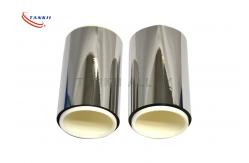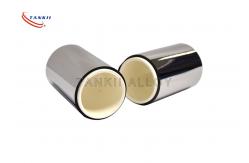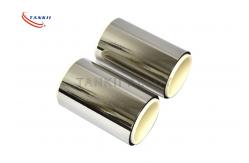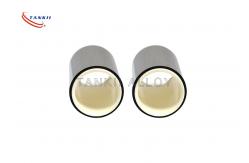6J23 Nicr Alloy
|
|
Customized Size 6J23 Nicr Alloy Thin Foil Electric Resistance Foil Strip
NiCr Alloy Description: Nichrome, a non-magnetic 80/20 alloy of nickel and chromium, is the most common resistance wire for heating purposes because it has a high resistivity and resistance to oxidation at high temperatures. When used as a heating element, resistance wire is usually wound into coils. One difficulty in using nichrome wire is that common tin-based electrical solder will not bond with it, so the connections to the electrical power must be made using other methods such as crimp connectors or screw terminals. TANKII (Alloy 875/815), a family of iron-chromium-aluminium (FeCrAl) alloys used in a wide range of high-temperature applications. Constantan [Cu55Ni45] has a low temperature coefficient of resistivity and as a copper alloy, is easily soldered. Other constant-resistance alloys include manganin [Cu86Mn12Ni2], Cupron [Cu53Ni44Mn3]and Evanohm. The Evanohm family of nickel-chrome alloys [Ni72Cr20Mn4Al3Si1],[Ni73Cr20Cu2Al2Mn1Si], have high resistance, low temperature coefficient of resistance, low electromotive force (Galvani potential) when in contact with copper, high tensile strength, and also are very stable with regards to heat treatment. Balco [Ni70Fe30] and similar alloys have very high, but more linear, temperature coefficient of resistivity, making them suitable for sensing elements. Many elements and alloys have been used as resistance wire for special purposes. The table below lists the resistivity of some common materials. The resistivity of amorphous carbon actually has a range of 3.8 - 4.1 × 10−6 Ω m.
Typical Practice: The following different kind of strain gauges are available in the market:
For measurements of small strain, semiconductor strain gauges, so called piezoresistors, are often preferred over foil gauges. A semiconductor gauge usually has a larger gauge factor than a foil gauge. Semiconductor gauges tend to be more expensive, more sensitive to temperature changes, and are more fragile than foil gauges. Nanoparticle-based strain gauges emerge as a new promising technology. These resistive sensors whose active area is made by an assembly of conductive nanoparticles, such as gold or carbon, combine a high gauge factor, a large deformation range and a small electrical consumption due to their high impedance. In biological measurements, especially blood flow and tissue swelling, a variant called mercury-in-rubber strain gauge is used. This kind of strain gauge consists of a small amount of liquid mercury enclosed in a small rubber tube, which is applied around e.g., a toe or leg. Swelling of the body part results in stretching of the tube, making it both longer and thinner, which increases electrical resistance. Fiber optic sensing can be employed to measure strain along an
optical fiber. Measurements can be distributed along the fiber, or
taken at predetermined points on the fiber. The 2010 America's Cup
boats Alinghi 5 and USA-17 both employ embedded sensors of this
type.
|
|||||||||||||||||||||||||||||||||||||||||||||||||||||||||||||||
| Product Tags: nickel alloys nichrome wire |
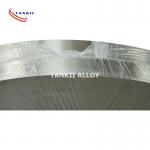
|
0.01mm 0.02mm 0.03mm Nichrome Alloy 80/20 / MWS-650 Strip / Foil Used For High-Precision Resistors |
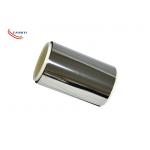
|
NiChrome N8 Foil Super Thin 0.005mm Used For Resistance Strain Gauge / Sensing Element |

|
Ni80Cr20 Nichrome Ribbon Heating Element 1200°C Max Temp |
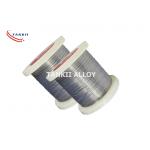
|
Nichrom Wire NiCr 80/20 For Resistor And Heater |
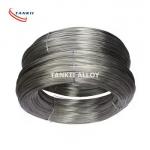
|
Nickel Manganese Alloy 212 Stranded Wire / Cable / Strip |
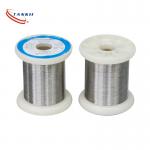
|
Factory Direct Ni70 Chromel 70/30 Resistance Alloy Wire In Heating Element |

